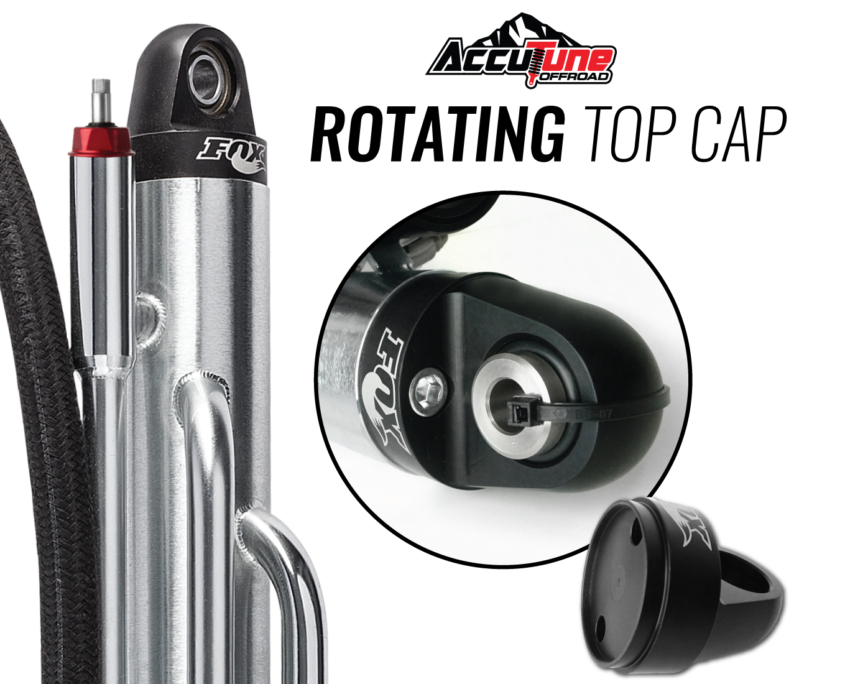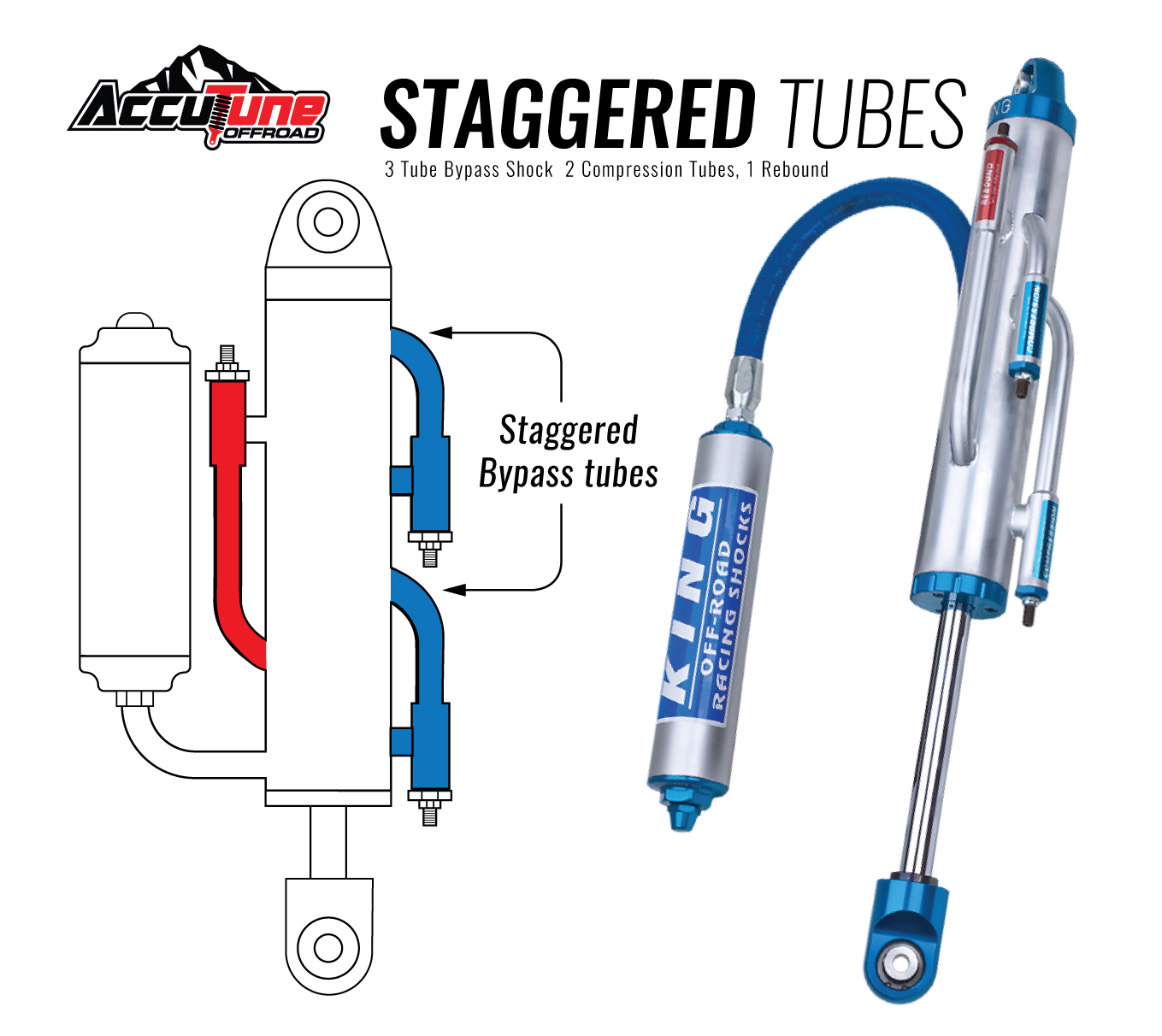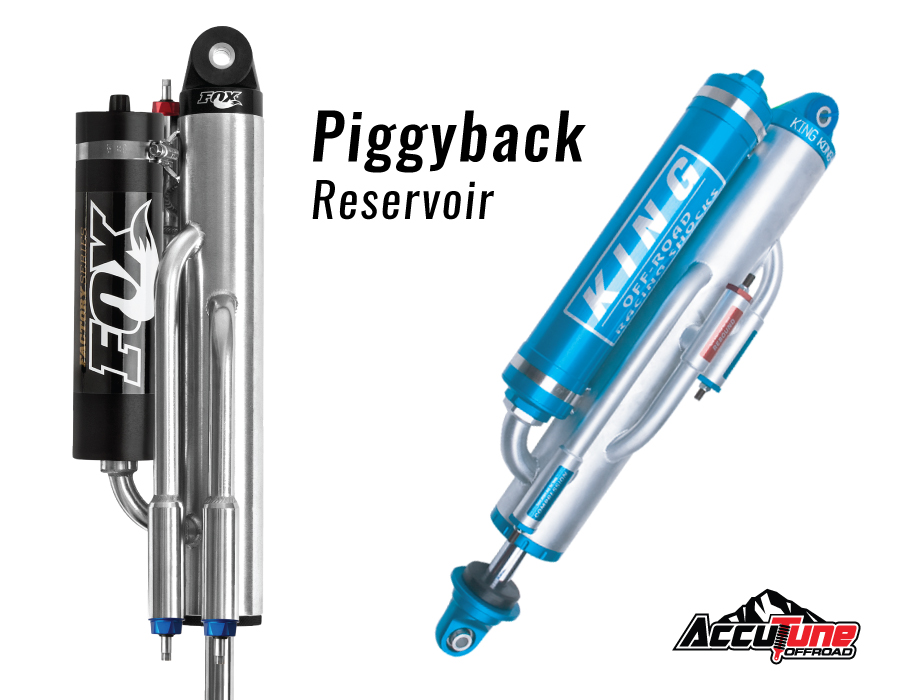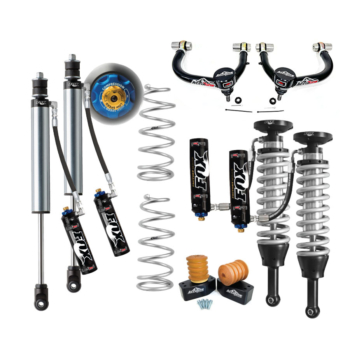March 23, 2021
- How do Bypass Shocks Work?
- Shock Zones & Basic Tube Layout
- Bottom Take Off Reservoir
Bypass Shocks PART 2
- Off the Shelf Options
- Multiple Compression & Rebound Tubes
- Staggered vs Overlapping Tubes
- Piggyback vs Remote Reservoir
- Shock Diameter
- Tube Layout Around Body
- Tube Heights & Diameter
- Custom Setup Recommendation
- Fox vs King Comparison
- Check Valve Design
- Pistons
- Bypass Adjusters Screws
- Piston Rods
- Oil Seals
- Bypass Shock Setup
- Up Travel
- Motion Ratio – Coilover & Bypass
- Total Weight
- Weight Distribution (front/rear)
- Unsprung Weight
Bypass shocks are available “off the shelf” in a lot of configurations, all of which have cost and performance implications. In Part II we will discuss the different options and the benefits they offer. We should preface part II by saying most problems we encounter when tuning bypass shocks relate to the shock not having enough flow through the bypass tubes to make the soft zones soft enough, and the stiff zones stiff enough.
Tube Orientation
The normal construction method for bypass shocks has been to start with a smooth body cap, thread in the top cap, and then to index the bypass tube from there. Because the cap threads in the tube, locations are fixed. In addition, if you ruin a cap or a body they will both need to be replaced.
Thread In Caps
Thread in caps are the classic way of doing things and the method most manufacturers use. Each style (2, 3, 4-tube, etc) are usually offered in a standard and 90 deg orientation, although other configurations can be custom ordered.
Rotating Top Caps
Fox converted all of their shocks to a rotating top cap several years ago and others are following slowly. The rotating caps allow for clocking the body on the vehicle. While it is useful for refining fitment in tight locations, it is not a replacement for custom tube layouts.
Bypass Shock Tube Count
Bypass shocks can be ordered with several compression and rebound bypass tubes. In general the more tubes you have, the more tuneable the shocks are.
2 Tube Bypass Shocks
2 tube bypass shocks typically come with one compression and one rebound tube. The quick transition between the ride zone and bump zone can be aggressive.
3 Tube Bypass Shocks
Also referred to as triple bypass shocks, these are by far the most popular configuration. The extra compression tube really helps smooth out the compression zones.
4 Tube Bypass Shocks
Adding the 4th rebound tube really helps with control, and is highly recommended for most on-axle applications where having too much rebound can be an issue.
5 Tube Bypass Shocks
The third compression tube tends to end up below the ride zone and is nice for smoothing out big whoops.
Trim Tubes
Some shocks have small diameter and short length tubes at various points along the shock body. The most common location is at the very top and they are for fine tuning the bump zone, especially on large shocks. It is also common to put additional tubes overlapping ride height by a few inches. These tubes can be used to smooth out the ride zone. If you’re going all in on big shocks small trim tubes for compression and rebound in the bump zone are a convenient feature.
Overlapping Tubes
Overlapping tubes double the amount of flow in the ride zone, which drastically improves tunability. Due to “free” increase in flow and tuneability overlapping bypass tubes are more preferred to a staggered layout. Fox and King Race Series come standard with overlapping tubes.
Staggered Tubes
Historically some tuners have preferred the staggered tube layout because each zone can be independently tuned without effecting the others. King PreRunner series bypass shocks come standard as a staggered layout.
Tube Diameters
Bypass Tube diameters are extremely important, because the more oil that can flow through the bypass tubes, the more tunable they are. For each tube to flow more oil, they must be larger in diameter. 5/8″ diameter tubes are very common along with 3/4″ diameter. For larger bypass shocks and custom setups, we can order them with 1″ tubes. Later on we will dive further into bypass tube sizes and placement on the shock body.
Bypass Shock Part II FAQ:
Can a bypass shock have too much flow?
Yes, it could have too much tuneability that goes unused. But at this point we have not encountered a situation where the bypass tubes flowed more than we could tune. If the shock is too soft and can’t be made stiff enough by revalving, there’s likely another problem such as the shock being too small, or the motion ratio being too aggressive.
Do piggyback shocks offer more cooling that remote reservoirs?
There are two things in play with this question. The first is cooling from the reservoir, and the second is oil capacity. In order to have cooling from the reservoir hot oil must be reaching the reservoir. Piggyback shocks have a very short distance between the shock body and the reservoir so it is very likely that hot oil is reaching the reservoir. On a remote reservoir shock with a long hose the hot oil may never reach the reservoir. However, that long reservoir hose does contain additional fluid. That additional fluid has additional heat capacity and will help slow the rate at which the shock heats up. Overall the differences are minor and you should choose whichever is easier for you to package.
Piggyback shocks have a very short distance between the shock body and the reservoir. Due to this short distance it is very likely that hot oil is reaching the reservoir. On a remote reservoir shock with a long hose the hot oil may cycle back and forth within the hose and never reach the reservoir.
Summary
Off the shelf bypass shocks are available in many tube configurations, each of which has fitment and performance implications. A three tube bypass shock with 3/4″ overlapping tubes will flow 3x as much oil as a three tube bypass shock with 5/8″ staggered tubes. Bypass shocks with too little oil flow will be harsh on chop and soft on g-outs. Increasing the oil flow 3x can yield huge improvements in tunability, allowing the tuner to improve performance on g-outs and chop.






















